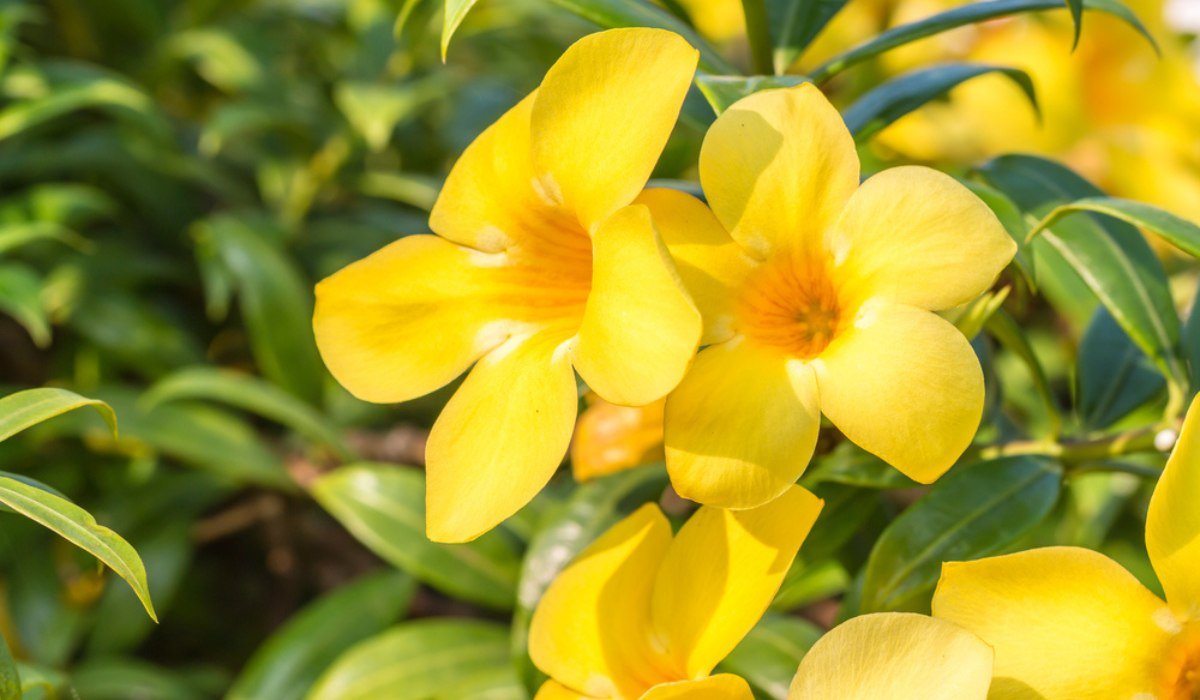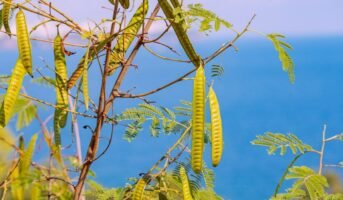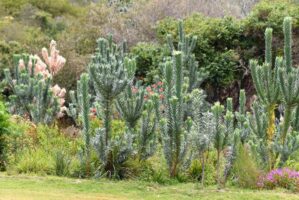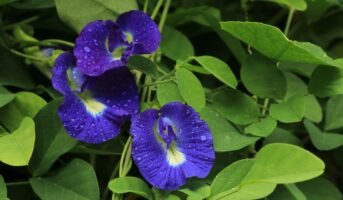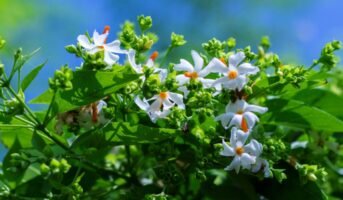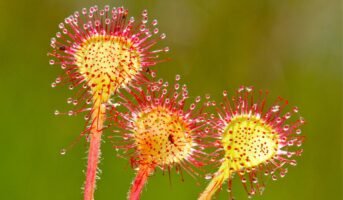If you are looking for a plant that can brighten your home garden with vibrant yellow flowers, go for Allamanda cathartica, a species of flowering plant of the Apocynaceae family. Allamanda cathartica produces fragrant flowers of deep golden yellow. It is popularly known as the golden trumpet, or common allamanda, grown in tropical locations.
See also: Allamanda blanchetii: All you need to know the purple allamanda
Allamanda Cathartica: Quick facts
| Plant name | Allamanda cathartica |
| Common names | Golden trumpet, yellow allamanda, common trumpetvine |
| Family | Apocynaceae |
| Found in | Brazil |
| Flower | Golden yellow flowers |
| Flower blooming season | Summer and fall |
| Benefits | Medicinal benefits |
Allamanda cathartica does not twine, or have tendrils, or aerial roots. The large trumpet-shaped flowers comprise of five large overlapping petals.
Allamanda cathartica: Varieties
Some of the popular varieties include the following.
- Golden Butterflies with tubular flowers
- Flore Plena comprise double flowers
- Grandiflora variety produces very large flowers
- Nobilis’ produces larger flowers with a wider flare
- Halley’s Comet produces double and semi-double flowers
- Hendersonii comprises smaller flowers having white, or orange markings in the throat and brown buds.
Other species used for ornamental purposes are given as follow.
- Bush Allamanda produces golden yellow flowers streaked with light orange red
- Purple Allamanda with large, dull magenta-violet flowers
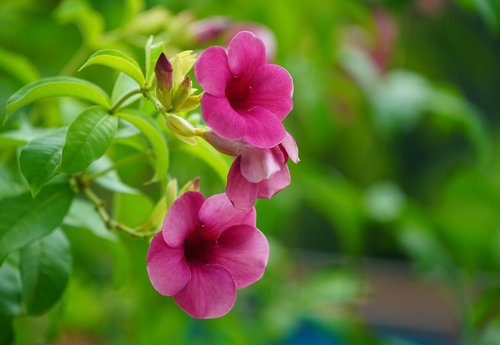
See also: all about Orange trumpet vine
Allamanda cathartica: How to grow?
Allamanda cathartica is widely grown as a houseplant. The plant can be pruned into a shrub. Otherwise, it can sprawl to a height of 20 feet. The plant is propagated through stem cuttings taken from April to May. Allamanda cathartica grows in the mildest climate. They can be placed in a container and brought indoors during cold weather.
How to propagate the Allamanda plant?
The Allamanda plants can be propagated through seeds as well as stem-tip cuttings. Make sure the stem have three to four fully formed leaves at the tip.
How to plant Allamanda seeds?
You can plant the Allamanda seeds in a pot or in the ground in the garden area. Choose a pot with 7 inches of upper diameter and having drainage holes. Fill the container with well-drained soil.
Soak Allamanda seeds in water at room temperature for at least 24 hour. Using a file or sandpaper allows the seed’s shell to lightly break and allow water to seep into it.
Sow the seeds by making a hole in the soil of about one inch and cover it with soil. Apply water and maintain the moisture levels by checking if the topsoil becomes dry to touch. Seeds will begin to germinate in about a week.
Allamanda cathartica: Uses
Allamanda cathartica, a plant that grows in tropical and subtropical regions, is known to possess medicinal properties. The flower extracts have anti-inflammatory, antioxidant, antifungal, antibacterial, laxative, and invitro hepatoprotective properties. The leaf extract has antioxidant and anti-inflammatory benefits, antifertility potency in males, and antimicrobial action against various drug-resistant clinical pathogens.
Allamanda cathartica: Care and maintenance
- Soil: The plant needs soil rich in organic matter. The soil must be moist but well-drained.
- Temperature: The plant needs a minimum of 18 degrees Celsius during its growing season. However, it can withstand temperatures down to 13 degrees Celsius.
- Watering: Ensure there is plenty of moisture for the plant. In the rest season from October to March, water the plant sparingly.
- Sunlight: Keep the plant exposed to bright light but not in direct sunlight.
- Repotting: Repotting is required every year until the plant is in a container of 40 to 50 centimetres.
How to prune the Allamanda plant?
Pruning the Allamanda plant is essential, which makes it easier to handle. The plant adjusts well to pruning and grows stronger. As it is a vigorous climbing vine, sometimes invasive, pruning helps set its boundaries for growth. Note that pruning the plant does not affect the flowering. Pruning can be done several times in a year or once in two years. The ideal time for pruning is at the end of winter and before spring growth before blooming starts.
Where to plant Allamanda?
Choose partially shaded locations in your home garden. You can opt for pot as an option to grow the plant. The plant can survive outside but only in mid-wintered locations. It cannot thrive in below-freezing temperatures. Wind tends to dry out the plants. Thus, when growing the plant in your garden, select a spot sheltered from the wind and if possible, along a lattice that the plant can climb along. Moreover, to prevent the plant from experiencing a transplant shock, make sure to cover the plant using a shade veil for about two to three weeks immediately after planting in case the weather is extremely hot.
Allamanda Cathartica: Common problems
Allamanda plant is resistant to most parasites and diseases. When the leaves begin to turn brown and curl, they are likely to be infested by aphids that may be colonizing the plant. Moreover, the vine is prone to attacks red spider mite.
Allamanda Cathartica: Pollinators
Allamanda plant is a favourite among pollinators. The plant attracts butterflies, bees, and birds to the garden.
FAQs
Is Allamanda poisonous to humans?
All the parts of Allamanda plant are mildly poisonous and may cause diarrhoea and vomiting when ingested. It can also cause dermatitis.
Does Allamanda attract bees?
Tubular-shaped allamanda flowers attract bees, butterflies, and hummingbirds.
Harini is a content management professional with over 12 years of experience. She has contributed articles for various domains, including real estate, finance, health and travel insurance and e-governance. She has in-depth experience in writing well-researched articles on property trends, infrastructure, taxation, real estate projects and related topics. A Bachelor of Science with Honours in Physics, Harini prefers reading motivational books and keeping abreast of the latest developments in the real estate sector.
